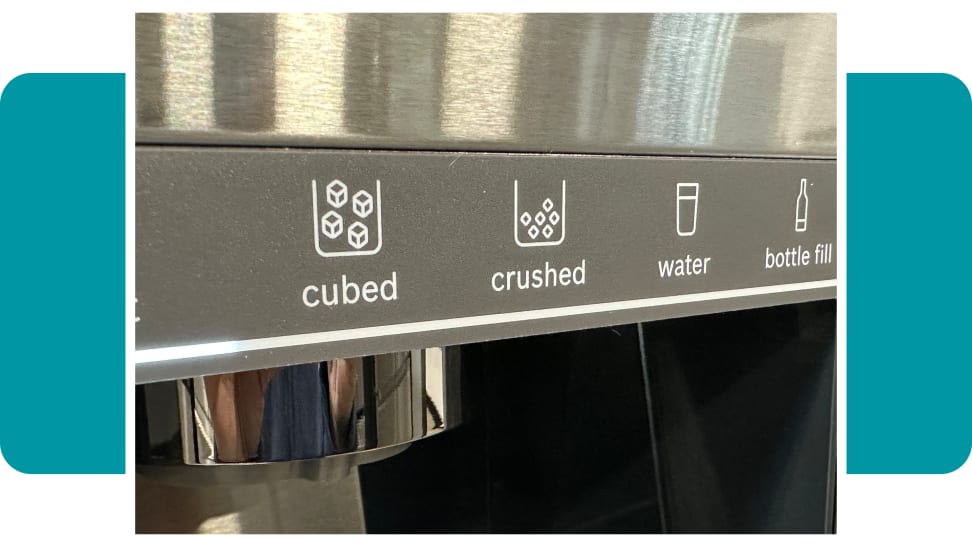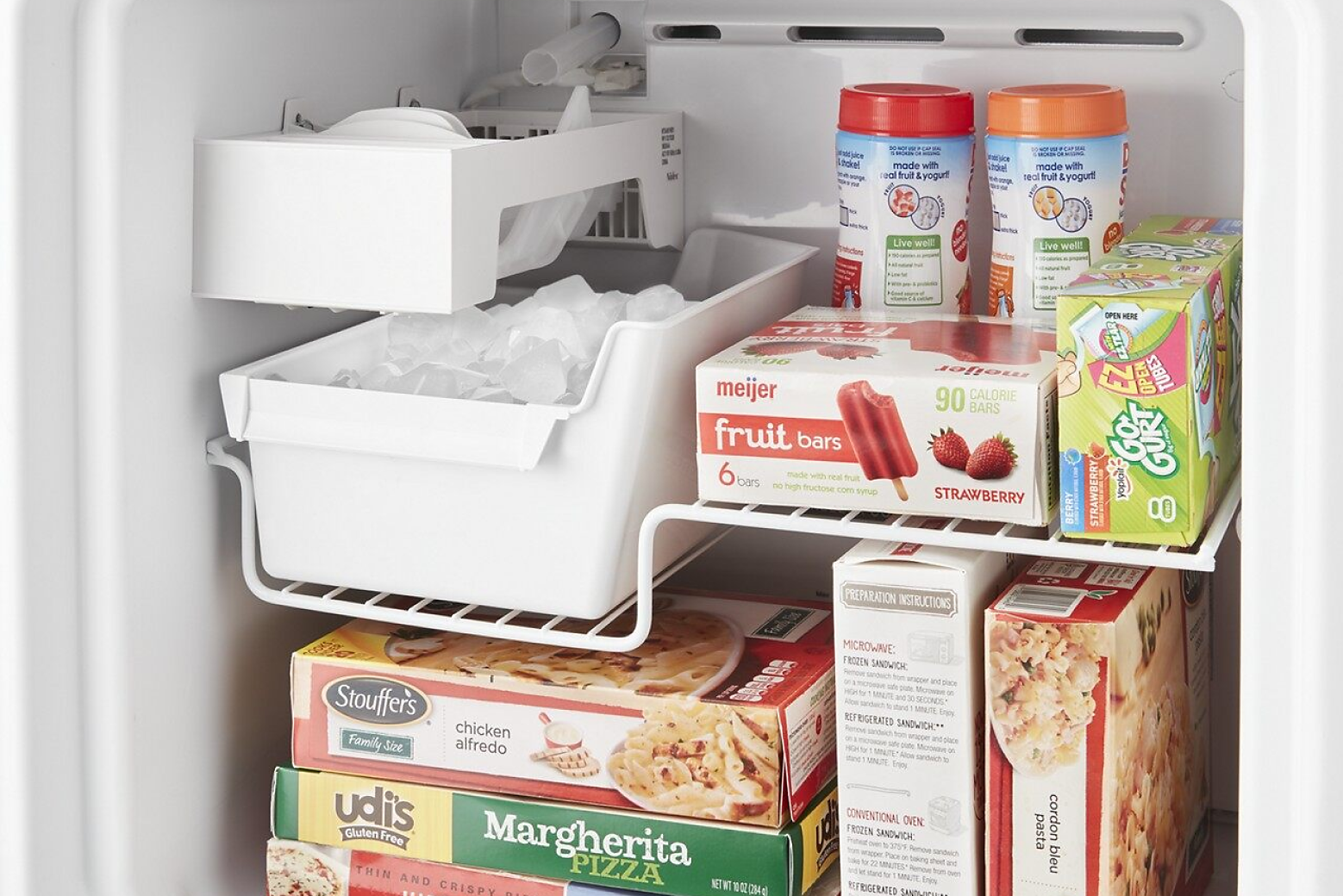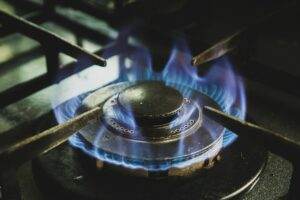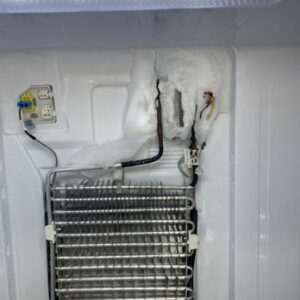Table of Contents
- Introduction To Ice Maker Troubleshooting
- Common Issues With Refrigerator Ice Makers
- Basic Understanding Before You Start
- Verifying Freezer Temperature
- Ideal Temperature Settings
- Impact Of Incorrect Temperatures On Ice Production
- Inspecting The Ice Bucket
- Common Issues With The Ice Bucket
- Adjustments And Solutions
- Checking The Water Filter
- Signs Of A Clogged Water Filter
- How To Replace Your Water Filter
- Evaluating The Water Line
- Detecting Issues With The Water Line
- Fixing Kinks And Blockages
- Troubleshooting The Fill Tube And Water Dispenser
- Identifying Fill Tube Problems
- Ensuring Proper Water Flow From The Dispenser
- Addressing Electrical And Mechanical Faults
- How To Test The Ice Maker’s Motor
- Dealing With A Faulty Door Switch
- Performing A Reset On Your Ice Maker
- Step-by-step Reset Instructions
- When And Why To Perform A Reset
- Preventive Maintenance And Care
- Regular Cleaning Tips
- Preventive Measures To Avoid Future Issues
- Table Of Key Maintenance Tasks
- Frequently Asked Questions
- Why Is My Ice Maker Not Making Ice In My Fridge?
- How Do I Reset My Refrigerator Ice Maker?
- What Triggers An Ice Maker To Fill?
- How To Tell If An Ice Maker Is Bad?
- Conclusion
First, ensure the ice maker is turned on and connected to a water supply. Next, check for any ice blockages in the ice mold.
Ice makers are vital components of modern refrigerators, providing the convenience of readily available ice. Troubleshooting an ice maker can be straightforward if you know what to look for. Begin by confirming that the ice maker is powered on and properly connected to the water supply.
Next, inspect the ice mold for any blockages that could impede ice production. Regular maintenance, such as replacing the water filter and ensuring the water line is free from kinks, can prevent many common issues. By addressing these basic checks, you can often resolve ice maker problems without needing professional assistance. Keeping your ice maker in good condition ensures a continuous supply of ice for your daily needs.
Introduction To Ice Maker Troubleshooting
A refrigerator ice maker is a convenient feature in modern kitchens. But, like all appliances, it can face issues. Troubleshooting your ice maker can save you money and time. This guide helps you understand common problems and fixes.
Common Issues With Refrigerator Ice Makers
Ice makers can stop working for various reasons. Here are some common issues:
- Ice maker not producing ice
- Ice cubes are too small or too large
- Ice maker leaking water
- Ice dispenser not working
Identifying the issue is the first step in troubleshooting your ice maker.
Basic Understanding Before You Start
Before you start troubleshooting, you need a basic understanding of how ice makers work. Here are the main components:
| Component | Function |
|---|---|
| Water supply line | Brings water to the ice maker |
| Water inlet valve | Controls the flow of water |
| Ice mold | Where water freezes into ice cubes |
| Thermostat | Monitors the temperature |
| Ice ejector | Pushes ice cubes into the bin |
Understanding these components helps you diagnose the problem correctly.
Verifying Freezer Temperature
Is your refrigerator’s ice maker not working? One common issue is the freezer temperature. Ensuring your freezer is at the right temperature is crucial for ice production. Let’s explore how to verify and adjust your freezer temperature.
Ideal Temperature Settings
The ideal freezer temperature for ice production is 0°F (-18°C). Ensure your freezer is set to this temperature. Use a thermometer for accurate readings. If you find the temperature is off, adjust the settings accordingly.
Impact Of Incorrect Temperatures On Ice Production
If the freezer temperature is too high or too low, ice production can be affected. High temperatures prevent ice from freezing properly. Low temperatures can cause the ice maker to malfunction or freeze up.
Here is a table summarizing the impact of incorrect temperatures:
| Temperature Issue | Impact on Ice Production |
|---|---|
| Too High | Ice doesn’t form properly |
| Too Low | Ice maker may freeze up |
To avoid these issues, ensure your freezer is consistently at 0°F. Check the temperature regularly to maintain optimal ice production.
Inspecting The Ice Bucket
When troubleshooting your refrigerator’s ice maker, inspecting the ice bucket is crucial. The ice bucket can often be the source of many issues. Knowing what to look for and how to address these issues can help restore your ice maker’s functionality.
Common Issues With The Ice Bucket
The ice bucket may encounter several common problems. These issues can disrupt the ice-making process. Here are some frequent problems:
- Ice clumps or jams: Ice pieces can stick together and form clumps.
- Ice not dispensing: The ice may not come out when you press the dispenser lever.
- Ice bucket not seating properly: The bucket may not be aligned correctly.
Adjustments And Solutions
After identifying the common issues, you can make some adjustments. Here are solutions for each problem:
| Problem | Solution |
|---|---|
| Ice clumps or jams | Break up the clumps manually. Ensure the freezer temperature is set correctly. |
| Ice not dispensing | Check for blockages in the dispenser chute. Clear any stuck ice. |
| Ice bucket not seating properly | Remove and reinsert the ice bucket. Ensure it’s aligned correctly. |
Regularly inspecting and maintaining your ice bucket can prevent many issues. Keep your ice maker running smoothly by addressing these common problems and applying the simple solutions provided.

Credit: reviewed.usatoday.com
Checking The Water Filter
The water filter is crucial for your refrigerator’s ice maker. It ensures clean water for your ice. A clogged water filter can disrupt the ice-making process. Learn how to identify and replace a clogged water filter.
Signs Of A Clogged Water Filter
- Ice cubes are smaller than usual.
- Ice has a bad taste or odor.
- Water flow is slow or reduced.
- Indicator light is on (if your fridge has one).
How To Replace Your Water Filter
- Locate the water filter. It is usually inside the fridge or in the grill at the bottom.
- Turn off the water supply to the fridge.
- Remove the old filter by twisting it counterclockwise.
- Install the new filter by twisting it clockwise until it locks.
- Turn the water supply back on.
- Run water through the dispenser for 5 minutes to clear air and impurities.
Table of Common Water Filter Locations:
| Refrigerator Brand | Water Filter Location |
|---|---|
| Whirlpool | Top right inside the fridge |
| Samsung | Bottom left of the fridge |
| LG | Rear of the fridge |
Important Tips:
- Check the filter model number before purchasing a replacement.
- Replace the water filter every six months.
- Keep a spare filter handy to avoid disruptions.
Evaluating The Water Line
Your refrigerator’s ice maker relies heavily on a steady water supply. Evaluating the water line is crucial. A faulty water line can cause your ice maker to stop working. Let’s explore how to detect and fix common water line issues.
Detecting Issues With The Water Line
First, check if water is reaching the ice maker. Look behind the refrigerator. Inspect the water line for visible signs of wear or damage. Is the line kinked or twisted? This can block water flow.
- Check for leaks: Water puddles can indicate a leaking line.
- Inspect connections: Ensure all connections are tight and secure.
- Listen for strange noises: Bubbling sounds can signal air trapped in the line.
Fixing Kinks And Blockages
Kinks and blockages can restrict water flow. To fix a kink, gently straighten the water line. If the line is damaged, replace it. For blockages, follow these steps:
- Turn off the water supply: Locate the valve behind the fridge.
- Disconnect the water line: Use a wrench if needed.
- Inspect for blockages: Look for debris or ice buildup.
- Clear the blockage: Use warm water to melt ice or a soft brush to remove debris.
- Reconnect and test: Reattach the line and turn the water supply back on.
Following these steps ensures your ice maker gets a steady water supply. Regularly check the water line to prevent future issues.
Troubleshooting The Fill Tube And Water Dispenser
Having issues with your refrigerator’s ice maker? Start by troubleshooting the fill tube and water dispenser. These components are crucial for ice production. Ensuring they function properly can save you from unnecessary headaches.
Identifying Fill Tube Problems
The fill tube carries water to the ice maker. Blockages or kinks can disrupt this flow. Follow these steps to identify fill tube issues:
- Inspect the tube for visible kinks or bends.
- Check for ice blockages by gently feeling the tube.
- If blocked, thaw the tube using a hairdryer on a low setting.
- Ensure the tube is securely connected to the water supply.
Ensuring Proper Water Flow From The Dispenser
Proper water flow is essential for ice production. Issues with the water dispenser can affect this flow. Here’s how to ensure proper water flow:
| Step | Action |
|---|---|
| 1 | Check the water filter. Replace if clogged. |
| 2 | Inspect the water line for kinks or damage. |
| 3 | Ensure the water pressure is sufficient. |
| 4 | Test the water inlet valve. Replace if faulty. |
Regular maintenance of the fill tube and water dispenser can prevent ice maker issues. Addressing these problems early can keep your ice maker running smoothly.
Addressing Electrical And Mechanical Faults
When your refrigerator’s ice maker stops working, it can be a real headache. Identifying electrical and mechanical faults is crucial. This guide will help you troubleshoot common issues effectively.
How To Test The Ice Maker’s Motor
The ice maker’s motor is essential for its operation. To test the motor:
- Unplug the refrigerator to ensure safety.
- Locate the motor inside the ice maker assembly.
- Use a multimeter to test for continuity. Set the multimeter to the lowest ohms setting.
- Connect the multimeter probes to the motor terminals.
- Check the reading. A reading of zero or infinity indicates a faulty motor.
If the motor fails the test, it needs to be replaced. A working motor should show a low resistance reading.
Dealing With A Faulty Door Switch
The door switch signals the ice maker to stop when the door is open. A faulty switch can halt ice production. Here’s how to check it:
- Open the refrigerator door.
- Locate the door switch near the top of the door frame.
- Press the switch manually. Listen for a clicking sound.
- If there is no click, the switch may be faulty.
Use a multimeter to test the switch for continuity:
- Set the multimeter to the lowest ohms setting.
- Touch the probes to the switch terminals.
- Press the switch. A reading of zero indicates a good switch.
- No change in reading means the switch is faulty and needs replacement.
Replacing the door switch can restore your ice maker’s functionality.
| Component | Testing Method | Action if Faulty |
|---|---|---|
| Ice Maker Motor | Multimeter Continuity Test | Replace Motor |
| Door Switch | Manual Click Test and Multimeter Continuity Test | Replace Switch |
Regular maintenance and proper testing can keep your ice maker working efficiently. Addressing these common faults ensures a steady supply of ice.

Credit: www.whirlpool.com
Performing A Reset On Your Ice Maker
Is your refrigerator’s ice maker acting up? Sometimes, all it needs is a simple reset. This process can solve many common issues and get your ice maker working again. Let’s dive into the details.
Step-by-step Reset Instructions
- Locate the reset button on your ice maker. It is usually found near the motor or the front panel.
- Press and hold the reset button for about 10 seconds. You might hear a chime or the ice maker’s motor starting up.
- Release the button. The ice maker should begin its reset cycle.
- Wait for a few minutes. The ice maker will start producing ice again if the reset was successful.
If your ice maker does not have a reset button, you can reset it by turning off the refrigerator for a few minutes. Then, turn it back on and wait for the ice maker to resume.
When And Why To Perform A Reset
Performing a reset can solve various ice maker problems. Here are some instances when a reset is necessary:
- The ice maker is not producing ice.
- It is producing smaller than usual ice cubes.
- The ice maker is making strange noises.
A reset helps by clearing any minor glitches in the system. It also ensures that the ice maker’s settings return to their default state. This can fix many common issues without needing professional help.
Still having trouble? Consider checking the water line or the freezer temperature. These can also affect the performance of your ice maker.
Preventive Maintenance And Care
Keeping your refrigerator’s ice maker in top condition can save you time and money. Preventive maintenance helps avoid common issues and ensures your ice maker works efficiently. Below, we’ll cover some essential tips for regular cleaning and preventive measures.
Regular Cleaning Tips
Regular cleaning is crucial to maintain the functionality of your ice maker. Here are some simple steps:
- Turn off the ice maker before cleaning.
- Remove and empty the ice bin.
- Use a mild detergent to clean the ice bin and water lines.
- Rinse thoroughly with warm water.
- Wipe down the exterior with a damp cloth.
Preventive Measures To Avoid Future Issues
Taking preventive measures can help you avoid potential problems with your ice maker. Consider the following tips:
- Check the water filter every six months. Replace if needed.
- Ensure the water line is not kinked or twisted.
- Keep the freezer temperature set between 0°F and 5°F.
- Inspect the ice maker’s components regularly for wear and tear.
- Ensure the refrigerator is level to distribute water evenly.
Table Of Key Maintenance Tasks
| Task | Frequency |
|---|---|
| Clean Ice Bin | Monthly |
| Replace Water Filter | Every 6 Months |
| Check Water Line | Quarterly |
| Inspect Components | Annually |

Credit: m.youtube.com
Frequently Asked Questions
Why Is My Ice Maker Not Making Ice In My Fridge?
Your ice maker might not be making ice due to a clogged water filter, a kinked water line, or a faulty inlet valve. Verify the freezer temperature is set correctly and ensure the ice maker’s arm is in the down position.
Check for any ice blockages in the maker’s components.
How Do I Reset My Refrigerator Ice Maker?
Locate the reset button on the ice maker. Press and hold it for 10 seconds. Release to reset.
What Triggers An Ice Maker To Fill?
A timer activates the water valve, filling the ice mold with water to start the ice-making process.
How To Tell If An Ice Maker Is Bad?
Check for no ice production, unusual noises, leaks, or slow ice-making. Inspect water supply and filter. Test the water valve.
Conclusion
Solving ice maker issues can be simple with the right steps. Follow our guide and restore your ice maker. Regular maintenance ensures your ice maker functions efficiently. For more complex problems, consulting a professional may be necessary. Keep your refrigerator in top shape for a continuous ice supply.



